Walter Chrysler had great mechanical skills on the Midwestern railroads and learned about cars by interacting with a locomotive he bought in 1908. In just a few years he became the plant manager at Buick under Charles W. Nash and took over from him as president. Chrysler didn’t get along with GM’s Billy Durant, so he left to run his own car company. In 1924, Chrysler had control of the company and introduced a car under his name. This was the foundation of the company’s success. Power came from a high-compression 202 cu. In with seven bearings and 68 brake horsepower. It also featured four-wheel hydraulic brakes, full pressure lubrication, attractive styling, and competitive prices. The make offered four different engines ranging from 195.6 to 309.3 cid.
The Chrysler line then moved up in prestige and power due to the company’s 1928expansion through the acquisition of Dodge and the introduction of Desoto and Plymouth. Imperial had come into the market in 1926 and was more of a prestigious leader than a high money earner. Unlike GM’s luxury models, Imperials produced through 1954 were not products of separate division and usually rivaled with Cadillac in many ways. A notable difference was that Imperial did not try to match Cadillac’s expensive V-12 and V-16 engines of the 1930s due to the poor market.
Imperial reached its peak in 1931 when Chrysler introduced its first eights. Hard times made sales rare, but these Imperials provided glorious models at a lower price. They are still the most beautiful Chrysler’s ever built the custom-bodied examples from the likes of Locke, Derham, Murphy, Waterhouse, especially LeBaron. Chrysler offered an eight-cylinder 191 CID-series with a price of half the Imperials with engines of 240.3cid and 72bhp or 260.8 cid and 90bhp. But the sixes still anchored the line and did through 1954.
